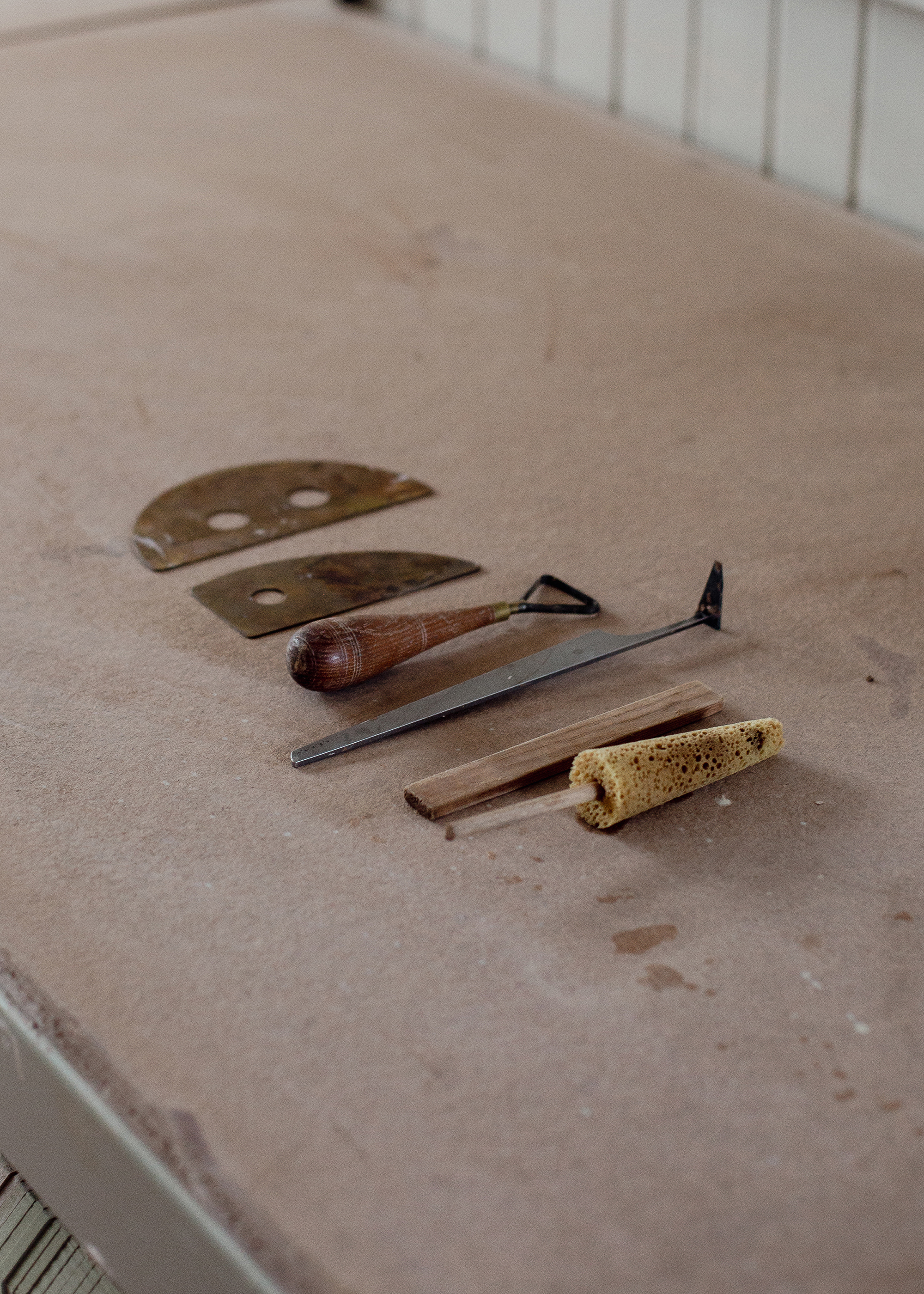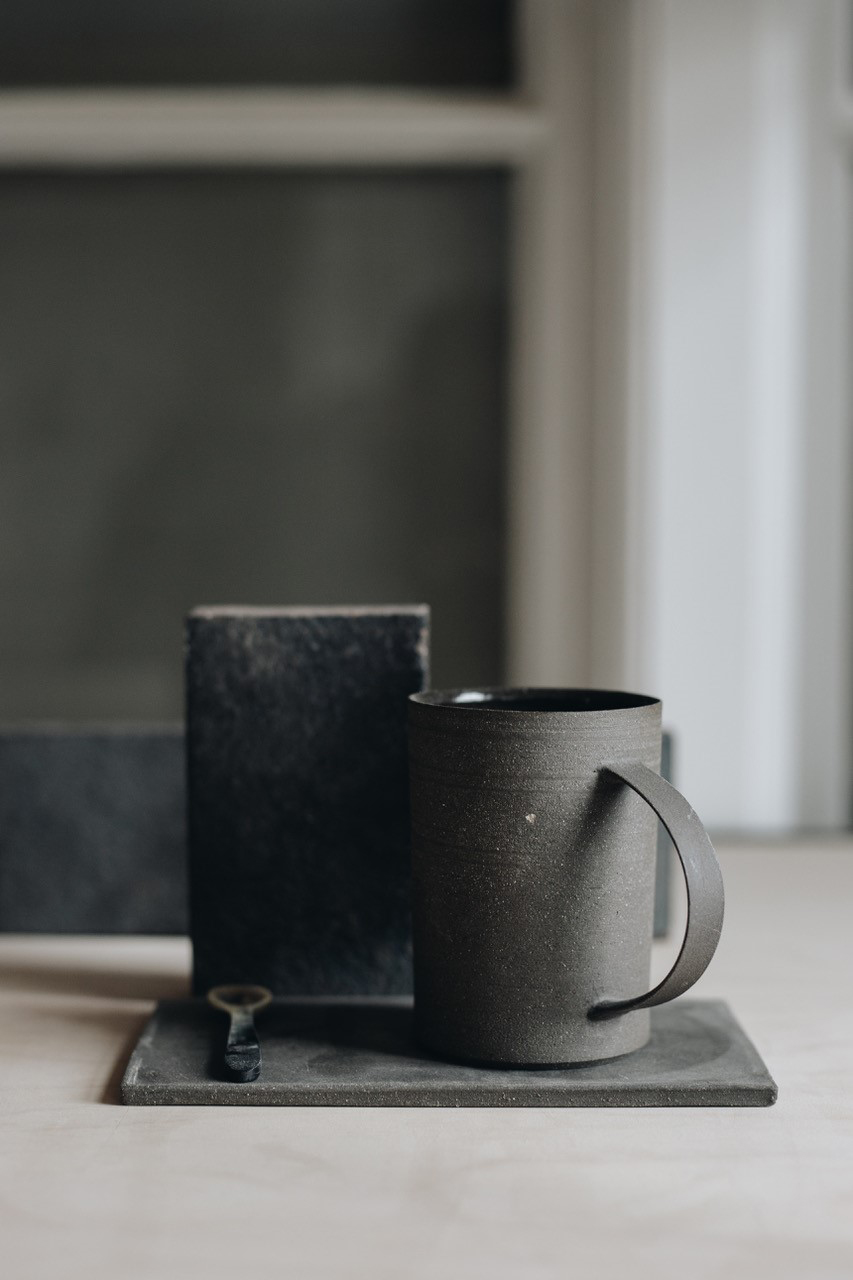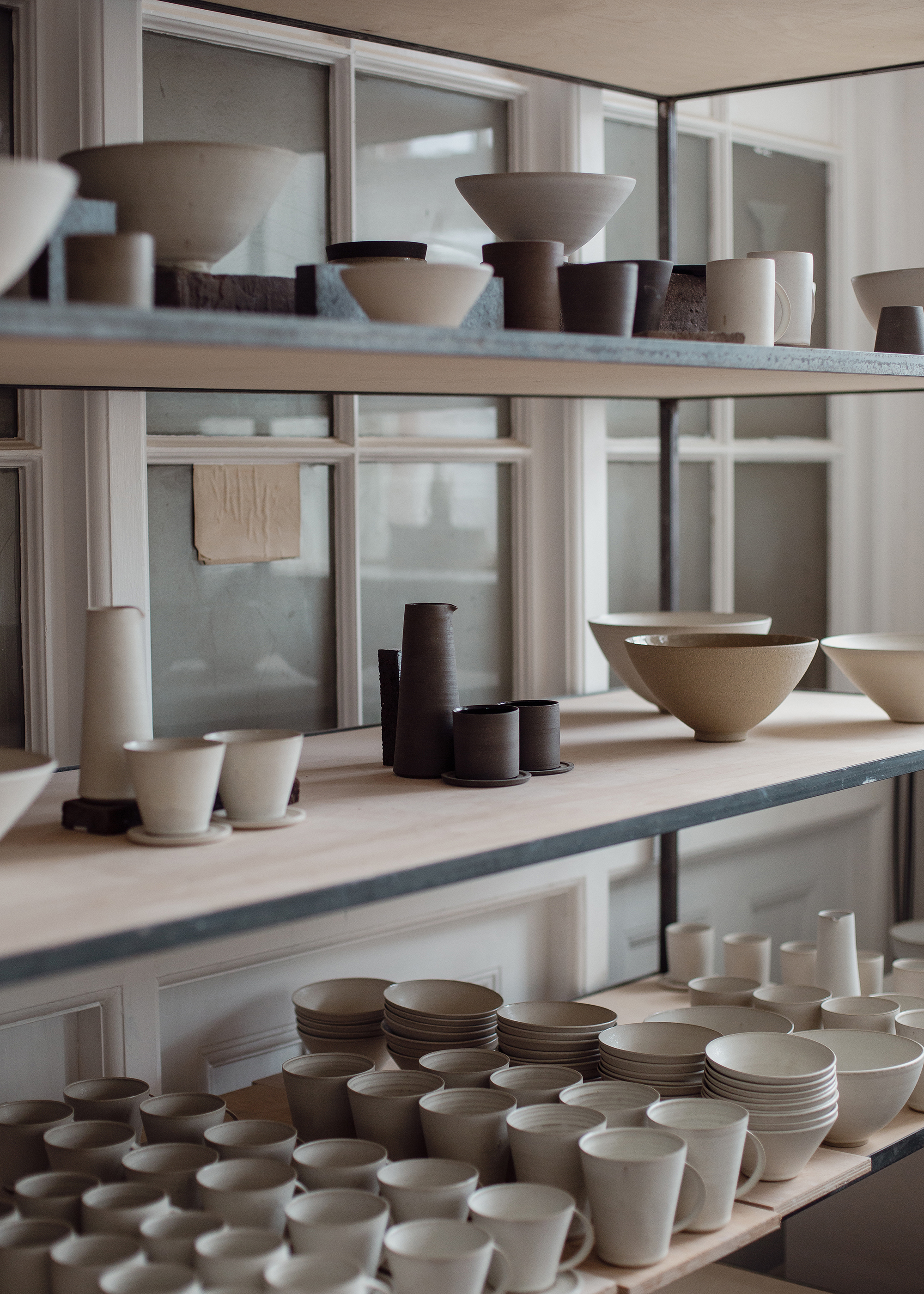In Conversation With Samuel Sparrow

December 2022
Words by Slancha/Samuel Sparrow
Samuel studied illustration at Glasgow School of Art before going on to work as a designer at the likes of Habitat and Ikea, before starting his own studio based on his own design principles in 2020.
While at Samuel’s studio, we discussed how his time in industry has influenced his practice today, as well as his online presence, working with Michelin star chefs, and his journey to get to where he is today.
 The Journey to see Samuel
The Journey to see Samuel
 Samuel's converted post office studio
Samuel's converted post office studio
Do you feel that your background as a designer for the likes of habitat and Ikea has had an influence on your distinct style as a ceramist?
I think that everything you do ultimately creates the person that you become and the aesthetic choices you make in your work. We are a product of all the influences that we’re are exposed to over the years. It's a lot of building blocks. They become you. I’ve always avoided colour and unnecessary decoration. I much prefer to explore the material quality of clay and the glazes I use.
It’s interesting seeing the shift from the mass manufacturing of Ikea and Habitat to the smaller, slower runs you do now. Was this a conscious decision?
Yes, on some levels. Like many people I grew dissatisfied with the throw -away culture that was synonymous with those brands. However, I did learn a lot about the commercial balance of running a business. Interestingly these same brands have, in recent years begun to create their own limited pieces which create the perception that a product is handmade. This is often achieved through a human interaction in their mass manufacturing processes.
I think if big companies are doing that, it's because they know that there's a shift in what consumers want.
Now especially, people are making a more considered decision about the products they choose to have in their lives. When somebody buys one of my pots - they’re investing in me and my studio. It’s incredibly humbling.


You’ve got such a lovely studio space; did you have to do much to it? You previously worked as an interior designer, that must have helped?
My studio is within our village’s old Post Office, a short walk from home and conveniently next door to the Royal Mail delivery office. Before I moved in I drew a scale model of the space and planned exactly where my wheel, kiln and sink were going to be positioned. I commissioned a local blacksmith to make some simple shelving. Well, actually I did that and then the shelves didn't fit through the door, so they had to be manufactured in two pieces! I like those kinds of problems.
Do you often get people coming to look around your studio?
To buy stamps! They think my studio is still a Post Office. But no, I'm not generally open to the public. Last year I participated in Spring Fling, which is Dumfries and Galloway's open studio event. It's one of the biggest in the UK, with around one hundred studios open during the long weekend in Spring. I had over 500 people attend my studio over the weekend. After working away in isolation for a year it was the first time that I'd had an opportunity to watch people interact with my work, pick it up, touch it, and break it!

When you started out, you had this vision of what you wanted to be but didn't have the skills to fulfil it. Do you now feel that your skills match your vision?
At the beginning my ability and skill level did not match the ideas I had. I was learning and I had to learn not to be frustrated by this early part of the process, something I have found very difficult in the past. The weight of a pot can be a give-away. The pots that I made in my first year were very heavy. For example, the first cups I made used around 350 grams of clay, now they're made from 150 grams.
You said you didn't know what you wanted to be when you were 35 years old; do you feel like you have now found your calling?
Yes. From the moment I first sat down at the wheel I knew that this was what I wanted to do and I couldn't get enough of it. I’m not sure there’s any other discipline that encompasses so many processes. From the meditative action of centering, the physicality of wedging clay, to the alchemy of firing and glazing. There’s a lifetime of exploration and that’s incredibly motivating to me. I wanted to explore every facet of it, and then get better and better at throwing the pieces that were inside my head. In the past I would sometimes give up, it’s easy to get frustrated when your ability doesn't match your ideas. But because I had an immediate love affair with it, I knew that it was going to be a longer process.


Do you look back on your first run with fondness now you can see the improvement?
Yes, apart from that first pot! It’s the same with everything that you make, I made a bowl, and it was the best bowl I'd ever made. But now it's not the best bowl ever but you appreciate it’s qualities and it acts as a marker to where you were in the journey of becoming a maker.
Did you get a good response to the launch of your new line of work?
It's all gone! My last shop update was a year ago and I was a little nervous about it.


What are you working on just now?
In 2022 I was approached by Kinn Collective to collaborate with a well know chef on a project here in Scotland. I’m currently making 1000 pots that will be delivered to a castle and estate in the Highlands later this year.
It must be nice having that collaboration with a chef as well.
Over the last year I’ve worked with the team and chef-patron Mark Birchall at 2 Michelin stars restaurant Moor Hall in Lancashire. They commissioned a new tea and coffee service for the restaurant and I had the opportunity to hand deliver the work. It is exciting and rewarding to work with chefs at that level. I also had the most incredible culinary experience of my life!




samuelsparrow.com
@sparrowandco
